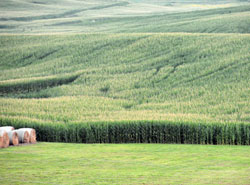 It is undisputed that the amount of land dedicated to crop production overall in the United States has been on the decline for decades, dropping 12 percent just between 1997 and 2012, according to USDA census data. At the same time, corn acreage and ethanol production have increased significantly, which is also undisputed.
It is undisputed that the amount of land dedicated to crop production overall in the United States has been on the decline for decades, dropping 12 percent just between 1997 and 2012, according to USDA census data. At the same time, corn acreage and ethanol production have increased significantly, which is also undisputed.
What is disputed is whether increased ethanol production has come at the expense of “grasslands at the fringe of the Corn Belt within close proximity of refineries” as alleged in a recent study funded in part by the National Wildlife Federation (NWF).
The NWF study claims satellite data shows “pockets of conversion” around ethanol plants bringing new croplands into production. Renewable Fuels Association (RFA) senior vice president Geoff Cooper says actual USDA census data at the county level disproves that theory. “The USDA data reveal that consistent with the national trend, the overwhelming majority of counties with ethanol plants witnessed reductions—not expansions—in cropland between 1997 and 2012,” Cooper says of the analysis that examined cropland data for the 180 counties where 199 grain ethanol plants were located in 2016.
According to RFA’s analysis, in the 2007 to 2012 time period examined by the NWF study, total cropland in counties with ethanol plants fell by 454,000 acres, or 0.8 percent overall. Of the 180 counties, there were 16 percent where 2012 cropland was higher than in 1997, 2002, or 2007. The increase averaged about three percent and “coincided with reductions in Conservation Reserve Program (CRP) land and pastureland.”

